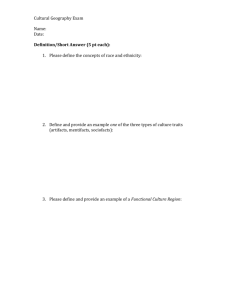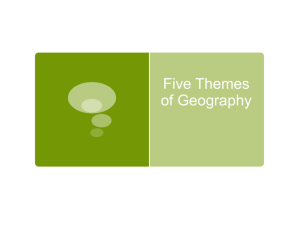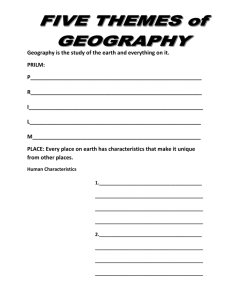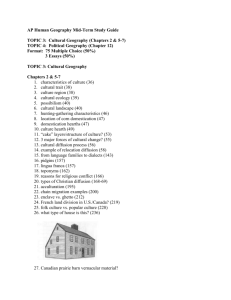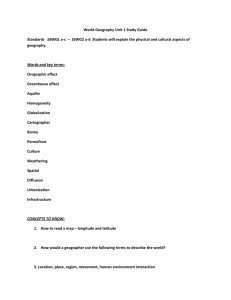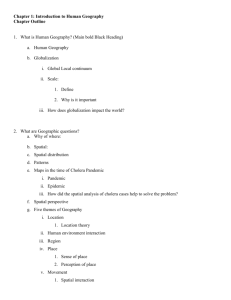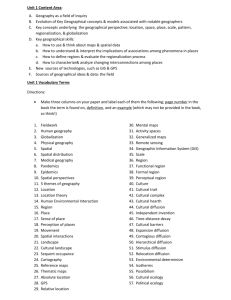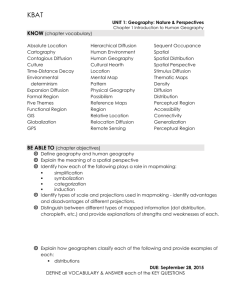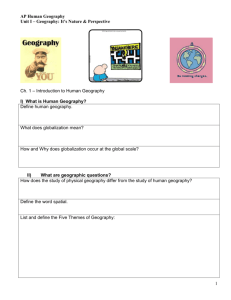Human Geography Unit 1 Study Guide (3)
advertisement
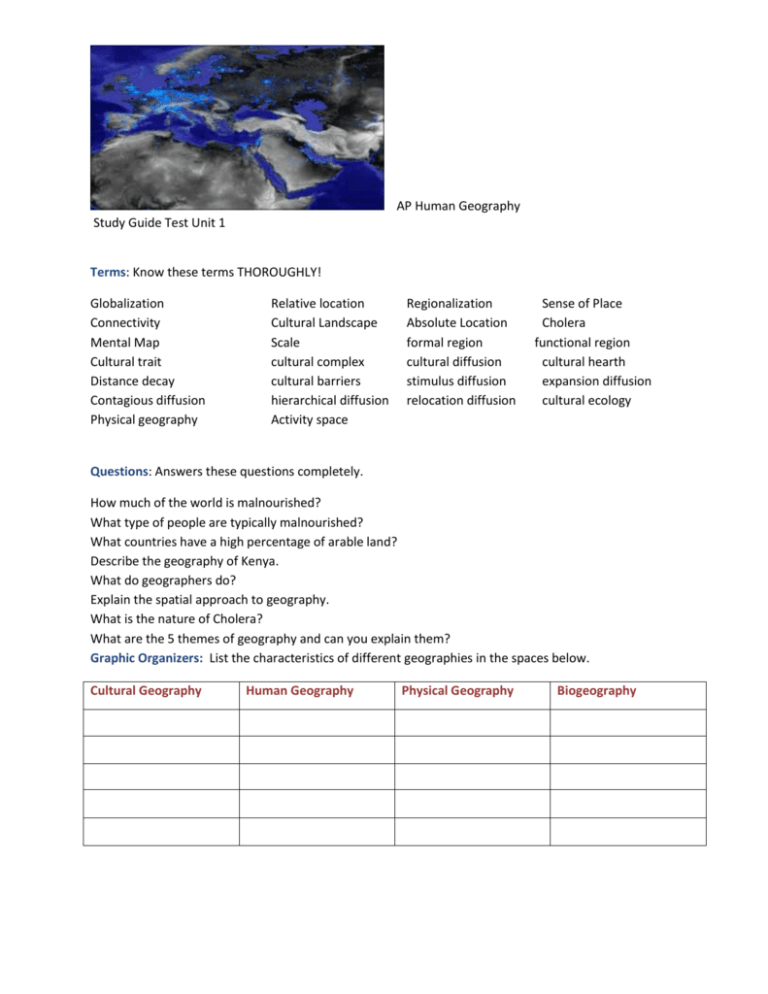
AP Human Geography Study Guide Test Unit 1 Terms: Know these terms THOROUGHLY! Globalization Connectivity Mental Map Cultural trait Distance decay Contagious diffusion Physical geography Relative location Cultural Landscape Scale cultural complex cultural barriers hierarchical diffusion Activity space Regionalization Absolute Location formal region cultural diffusion stimulus diffusion relocation diffusion Sense of Place Cholera functional region cultural hearth expansion diffusion cultural ecology Questions: Answers these questions completely. How much of the world is malnourished? What type of people are typically malnourished? What countries have a high percentage of arable land? Describe the geography of Kenya. What do geographers do? Explain the spatial approach to geography. What is the nature of Cholera? What are the 5 themes of geography and can you explain them? Graphic Organizers: List the characteristics of different geographies in the spaces below. Cultural Geography Human Geography Physical Geography Biogeography AP Human Geography Study Guide Test Unit 1 People: What contributions did they make to the study of human geography? Carl O. Sauer Gould and White Wilbur Zelinsky Hagerstrand Graphic Organizer: Note the similarities and differences in the Venn diagram below for the terms listed underneath! Environmental Possibilism Environmental Determinism Essays: Prepare for all, but only 2 will be assigned. 1. Discuss the problems that “geographic illiteracy” can present to a country such as the United States in the Twenty-First Century. Give examples of the need for geographic knowledge in diverse areas such as international politics, domestic politics, economics, and popular culture. 2. Discuss the difference between absolute and relative location. What is the absolute location of Stevenson High School? How would you describe the relative location of the AP Human Geography Study Guide Test Unit 1 town or city where High School is located? 3. Describe the use of spatial analysis in the discovery of the cause of cholera. Give one or two examples of the spatial aspects of diseases which are commonly in the news (e.g. AIDS, flu, etc.). 4. What is a functional region and how does it differ from a formal region? Discuss the functional region associated with a nearby metropolitan center—describe movement, communication and interaction between the metro area and its surrounding region. 5. Briefly describe the difference between expansion and relocation diffusion. Give several example of each. 6. The South region of the United States, it is argued, persists as a region which is different from other U.S. regions. Identify some of the material and nonmaterial cultural attribute associated with this region. Discuss possible boundaries of the region and what you would use to establish the boundaries. In your opinion, is the South becoming more or less like the rest of the country? Give evidence for your opinion. FRQ Unit 1 1. One way that geographers analyze spatial patterns is do divide the earth into regions. a. Define formal regions, functional regions and spatial regions b. Give an example of a formal region and explain how its characteristics distinguish it from other formal regions. c. Given an example of a functional region, and explain how its characteristics distinguish it from other functional regions. d. Give an example of a perceptual region, and explain how its characteristics distinguish it from other perceptual regions
